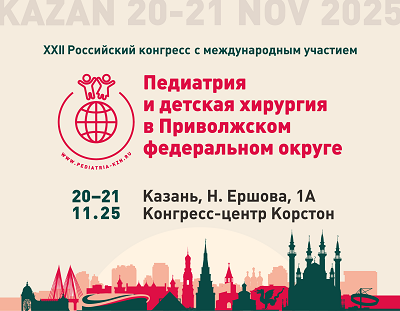Sarcopenic obesity in children with cerebral palsy
https://doi.org/10.21508/1027-4065-2025-70-5-36-41
Abstract
Children with cerebral palsy have a number of risk factors for the development of sarcopenic obesity: low motor activity, limited joint mobility, eating disorders, deficiency of actual nutrition, dysphagia, taking medications.
The aim of the study was to analyze the frequency and structure of sarcopenic obesity depending on the type of physical development, gender, form and class of motor activity in children with cerebral palsy
Materials and methods. Anthropometric indicators (body weight, height, body mass index), body component composition were studied in 132 children with spastic forms of cerebral palsy aged 4–17 years with the level of motor disorders GMFCS I–V. Sarcopenic obesity was detected with an increase in the MFR — muscle-to-fat ratio index, calculated as the ratio of the content of musculoskeletal mass to fat mass.
Results. According to the level of physical development, underweight prevailed in 50% of children, and overweight and obesity were observed in 11% of patients. Sarcopenic obesity was detected in 15.9% of children with cerebral palsy, its frequency did not significantly differ in children depending on gender, class of motor activity and form. Sarcopenic obesity was more often found in overweight and obese children than in children with normal physical development and protein-energy deficiency (p<0,001).
Conclusions: The conducted study shows the need to use bioimpedance analysis and calculation of the MFR indicator in assessing the nutritional status of children with cerebral palsy for the timely diagnosis of sarcopenia and sarcopenic obesity and the appointment of correction.
Keywords
About the Authors
R. F. RakhmaevaRussian Federation
420012, Kazan; 420138, Kazan
A. A. Kamalova
Russian Federation
420012, Kazan; 420138, Kazan
References
1. Stavsky M., Mor O., Mastrolia S.A., Greenbaum S., Than N.G., Erez O. Cerebral Palsy-Trends in Epidemiology and Recent Development in Prenatal Mechanisms of Disease, Treatment, and Prevention. Front Pediatr. 2017; 5: 21. DOI: 10.3389/fped.2017.00021
2. Pavlovskaya E.V., Bagaeva M.E., Zubovich A.I., Strokova T.V., Starodubova A.V. Sarcopenic obesity in children: clinical significance, approaches to diagnosis and treatment. Vopr. det. dietol. 2023; 21(5): 63–70. (in Russ). DOI: 10.20953/1727-5784-2023-5-63-70
3. Kirk B., Cawthon P.M., Arai H., José A., Funes А., Barazzoni R., et al. The Conceptual Definition of Sarcopenia: Delphi Consensus from the Global Leadership Initiative in Sarcopenia (GLIS). Age Ageing. 2024; 53 (3):afae052. DOI: 10.1093/ageing/afae052
4. Peterson M.D., Gordon P.M., Hurvitz E.A. Chronic disease risk among adults with cerebral palsy: the role of premature sarcopoenia, obesity and sedentary behaviour. Obes Rev. 2013; 14(2): 171–182. DOI: 10.1111/j.1467-789X.2012.01052.x
5. Verschuren O., Smorenburg A.R., Luiking Y., Bell K., Barber L., Peterson M.D. Determinants of muscle preservation in individuals with cerebral palsy across the lifespan: a narrative review of the literature. J Cachexia Sarcopenia Muscle. 2018; 9(3): 453–464. DOI: 10.1002/jcsm.12287
6. Kamalova A.A., Rahmaeva R.F. Features of Nutritional Status Assessment in Children with Cerebral Palsy. Ros Vestn Perinatol i Pediatr 2018; 63:(5): 212–216 (in Russ). DOI: 10.21508/1027-4065-2018-63-5-212-216
7. Rudnev S.G., Soboleva N.P., Sterlikov S.A., Nikolaev D.V., Starunova O.A., Chernyh S.P. et al. Bioimpedance study of the body composition of the Russian population. Moskva: RIO CNIIOIZ 2014. 493 p. (in Russ)
8. Gätjens I., Schmidt S.C.E., Plachta-Danielzik S., Bosy-Westphal A., Müller M.J. Body Composition Characteristics of a Load-Capacity Model: Age-Dependent and Sex-Specific Percentiles in 5- to 17-Year-Old Children. Obes Facts. 2021; 14(6): 593–603. DOI: 10.1159/000518638
9. McCarthy H.D., Samani-Radia D., Jebb S.A., Prentice A.M. Skeletal muscle mass reference curves for children and adolescents.Pediatr. Obes. 2014; 9: 249–259. DOI: 10.1111/j.2047-6310.2013.00168.x
10. Zav’yalova A.N., Novikova V.P., Yakovleva M.N. Sarkopenia in children: lecture. Medicinskij Sovet.2024;(1): 245–253. (in Russ). DOI:org/10.21518/ms2023-470
11. Pacifico L., Perla F.M., Andreoli G., Grieco R., Pierimarchi P., Chiesa C. Nonalcoholic Fatty Liver Disease Is Associated With Low Skeletal Muscle Mass in Overweight Obese Youths. Front Pediatr. 2020; 8: 158. DOI: 10.3389/fped.2020.00158
12. Sadowsky C.L. Targeting Sarcopenia as an Objective Clinical Outcome in the Care of Children with Spinal Cord-Related Paralysis: A Clinician’s View. Children (Basel). 2023; 10(5): 837. DOI: 10.3390/children10050837
13. Buğdaycı O., Eker N. The impact of sarcopenia and sarcopenic obesity on survival in children with Ewing sarcoma and osteosarcoma. Pediatr Radiol. 2023; 53(5): 854–861. DOI: 10.1007/s00247-022-05583-5]
14. Zembura M, Matusik P. Sarcopenic Obesity in Children and Adolescents: A Systematic Review. Front Endocrinol (Lausanne). 2022; 13: 914740. DOI: 10.3389/fendo.2022.914740
15. McCarthy H.D., Samani-Radia D., Jebb S.A., Prentice A.M. Skeletal Muscle Mass Reference Curves for Children and Adolescents. Pediatr Obes 2014; 9(4): 249–259. DOI: 10.1111/j.2047-6310.2013.00168.x
16. Gontarev S., Jakimovski M., Georgiev G. Using Relative Handgrip Strength to Identify Children at Risk of Sarcopenic Obesity. Nutr Hosp 2020; 34(3): 490–496. DOI: 10.20960/nh.02977
17. Steffl M., Chrudimsky J., Tufano J.J. Using Relative Handgrip Strength to Identify Children at Risk of Sarcopenic Obesity. PloS One 2017; 12(5):e0177006. DOI: 10.1371/journal.pone.0177006]
Review
For citations:
Rakhmaeva R.F., Kamalova A.A. Sarcopenic obesity in children with cerebral palsy. Rossiyskiy Vestnik Perinatologii i Pediatrii (Russian Bulletin of Perinatology and Pediatrics). 2025;70(5):36-41. (In Russ.) https://doi.org/10.21508/1027-4065-2025-70-5-36-41










































